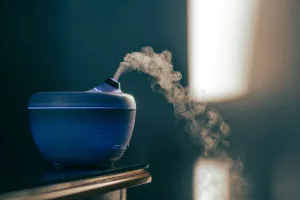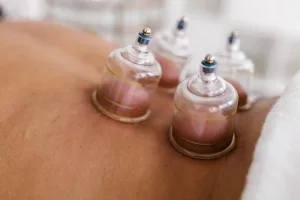For centuries, colors have been more than just a visual experience—they’ve been believed to hold therapeutic properties capable of influencing our mental and physical well-being. From ancient civilizations in Egypt and India to modern wellness centers, chromotherapy, or color therapy, has emerged as a holistic practice aimed at improving health through the application of colors. By leveraging the energy of light and color, practitioners believe it’s possible to address a wide variety of conditions, ranging from stress and anxiety to physical ailments like chronic pain and inflammation.
Modern science has also begun exploring the connection between colors and human health, particularly how light and color wavelengths affect mood, energy levels, circadian rhythms, and even immune function. While some aspects of chromotherapy are still grounded in anecdotal evidence and alternative practices, its enduring popularity stems from its ability to integrate ancient wisdom with contemporary wellness trends. This article delves into the foundations, applications, and emerging science of chromotherapy to understand its potential impact on physical and mental health.
What Is Chromotherapy?
Chromotherapy is a healing practice that uses colors to balance the mind, body, and emotions. The theory behind chromotherapy is rooted in the idea that different colors, each with their own specific wavelength and frequency, influence our energy levels, mood, and biological processes. Practitioners of chromotherapy often see colors as tools for healing, aligning the body’s energy systems to achieve balance and harmony.
In practice, chromotherapy involves exposing the individual to specific colors using tools such as colored lights, glass filters, or even visualizations. These colors are chosen based on their associated effects. For example, red is believed to stimulate and energize, while blue is thought to calm and soothe. The method is often used in conjunction with other holistic therapies like meditation, yoga, and aromatherapy to amplify its impact on overall well-being.
While chromotherapy is frequently categorized as complementary or alternative medicine, it intersects with modern disciplines like color psychology and phototherapy, making it an intriguing field for both traditional healers and scientific researchers.
The Historical Roots of Chromotherapy
The origins of chromotherapy can be traced back to ancient civilizations, where the healing potential of colors was deeply intertwined with spiritual and medical practices. In ancient Egypt, sunlight was channeled through colored glass and gemstones to treat physical and mental ailments. Specific temples were even dedicated to color healing, with rooms designed to bathe the body in hues believed to promote health and vitality.
In Indian Ayurvedic medicine, colors have long been associated with the body’s seven chakras, or energy centers. Each chakra corresponds to a specific color and governs various aspects of physical, emotional, and spiritual well-being. For instance, the root chakra is linked to red and symbolizes grounding and survival, while the crown chakra is associated with violet and represents enlightenment and connection to higher consciousness.
Similarly, in traditional Chinese medicine, the concept of yin and yang incorporates color symbolism to balance opposing forces within the body. For example, green is seen as a harmonizing color that fosters renewal, while red stimulates and energizes the system.
In the 19th century, chromotherapy was brought into modern consciousness by Edwin D. Babbitt, who published The Principles of Light and Color, outlining his theories on using specific colors for healing various ailments. Since then, the practice has evolved but retains its ancient roots, continuing to inspire practitioners and researchers alike.
How Chromotherapy Works
The practice of chromotherapy hinges on the belief that colors interact with the body’s energy fields to influence physical, emotional, and psychological states. Each color emits a specific wavelength of light that can penetrate the skin and stimulate different biochemical and neurological responses. This interaction is thought to restore balance to the body’s energy systems, much like acupuncture or other energy-based therapies.
Some common methods of applying chromotherapy include:
- Colored Light Therapy: Using light bulbs, LED devices, or filters to shine specific colors onto the body to promote healing. For instance, blue light is often used to calm inflammation, while red light stimulates circulation and energy production.
- Visualization Techniques: Guiding individuals to imagine specific colors while meditating or relaxing, with the goal of aligning their thoughts and emotions with the energy of the chosen color.
- Color-Infused Environments: Designing spaces with intentional use of colors, such as blue walls for relaxation in bedrooms or yellow accents in offices to stimulate creativity and focus.
While the mechanisms of chromotherapy are still under investigation, emerging evidence suggests that light and color can indeed affect human biology. For example, exposure to blue light has been shown to regulate circadian rhythms, while certain wavelengths of red light can promote cellular repair and collagen production.
The Psychological Effects of Colors
Colors have a profound psychological impact, shaping our emotions, behaviors, and perceptions in ways we might not always recognize. Here’s how some common colors are believed to influence mental health:
- Red: This bold, energizing color is linked to passion, vitality, and alertness. Red can boost confidence and physical energy but should be used sparingly, as excessive exposure can lead to feelings of agitation or stress.
- Blue: Known for its calming and soothing properties, blue is often used to reduce stress, lower blood pressure, and improve sleep. It is also associated with clear communication and tranquility.
- Yellow: Often linked to happiness and optimism, yellow can uplift mood and enhance focus. However, too much yellow can be overstimulating and lead to anxiety.
- Green: A color of balance and renewal, green is associated with harmony and healing. It can help reduce anxiety and promote a sense of calm and well-being.
- Purple: Symbolizing creativity and spirituality, purple inspires imagination and emotional balance. It is often used in spaces for meditation or artistic work.
- Orange: A warm, energizing color, orange promotes enthusiasm and creativity. It is also thought to help combat fatigue and encourage social interaction.
The psychological effects of colors are not only used in therapy but also influence marketing, interior design, and even workplace productivity. For example, blue tones are often used in hospitals to create a sense of calm, while restaurants may use red to stimulate appetite.
Chromotherapy for Physical Health
In addition to its psychological benefits, chromotherapy is often applied to support physical healing. Practitioners believe that specific colors can influence the body’s biological processes in measurable ways. Some examples include:
- Red: Stimulates blood circulation, boosts energy levels, and promotes cell regeneration, making it useful for individuals with low energy or slow wound healing.
- Blue: Reduces inflammation, soothes pain, and lowers blood pressure, making it a popular choice for headaches, muscle tension, or stress-related conditions.
- Green: Enhances immune function and promotes overall healing, often used for recovery from illness or injury.
- Yellow: Aids in digestion and supports detoxification by stimulating the digestive organs.
While these effects are largely anecdotal, ongoing research into light therapies—such as red light therapy for skin health and blue light therapy for acne—provides promising avenues for future study. Incorporating colors into daily routines may complement traditional medical treatments, offering a holistic approach to wellness.
Scientific Perspectives on Chromotherapy
The scientific community remains divided on chromotherapy’s validity as a medical treatment. While there is evidence that light and color can influence mood, energy, and biological functions, skeptics argue that many claims are subjective or based on the placebo effect.
Nevertheless, certain aspects of chromotherapy align with established scientific practices. For instance, bright light therapy is a proven treatment for seasonal affective disorder (SAD), and blue light exposure has been shown to regulate circadian rhythms by suppressing melatonin production. Similarly, red light therapy has been studied for its role in enhancing cellular repair and reducing inflammation.
Future research may uncover more concrete mechanisms behind chromotherapy, potentially bridging the gap between anecdotal practices and evidence-based medicine.
Practical Applications of Chromotherapy
For those interested in exploring chromotherapy, there are many accessible ways to incorporate color therapy into daily life:
- Light Therapy Devices: Use devices like LED lamps or lightboxes to expose yourself to therapeutic colors for specific purposes, such as improving mood or energy.
- Mindful Wardrobe Choices: Select clothing in colors that reflect your desired emotional state or energy level for the day.
- Interior Design: Create intentional spaces using color psychology principles, such as calming blue walls in bedrooms or energizing yellow accents in kitchens.
- Guided Meditation: Incorporate visualizations of specific colors during meditation to enhance relaxation, focus, or emotional balance.
These simple practices allow individuals to experiment with the benefits of chromotherapy in a low-cost, accessible way.
Challenges and Criticisms of Chromotherapy
While chromotherapy offers potential benefits, it also faces significant criticism. The lack of rigorous scientific studies makes it difficult to validate many of its claims, and critics argue that the effects of color are often subjective and culturally influenced.
It’s also important to note that chromotherapy is not a substitute for conventional medical treatments. Instead, it should be viewed as a complementary approach to health and wellness, enhancing traditional therapies rather than replacing them.
Conclusion
Chromotherapy provides a fascinating perspective on the interplay between color, light, and human health. Whether you see it as an ancient art, a modern wellness tool, or simply a way to brighten your day, it offers an opportunity to explore the profound influence of colors on our physical and mental well-being.
By embracing chromotherapy as a complementary practice, individuals can tap into the power of color to create balance, boost mood, and enhance their overall quality of life. Whether through light therapy, intentional design, or mindful visualization, the simple act of engaging with color can be a transformative and healing experience.




